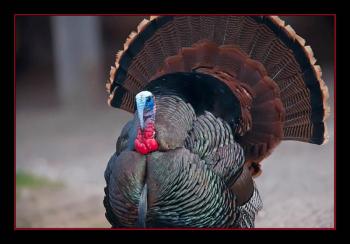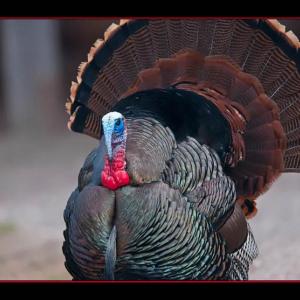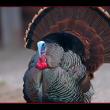Happy Turkey Day, every day
If you celebrate Thanksgiving and you’re not a vegetarian, chances are you will be enjoying a turkey dinner November 22, but not in the way history had the settlers feasting on the birds in 1621. According to one text, “besides waterfowl, there was great store of wild turkeys, of which they took many.” Of course, the turkey you’ll partake of is hardly the bird the Native Americans shared with the Pilgrims.
Wild turkeys are so numerous today that it’s hard to believe there was a time when there were none left in Maine at all. Due to over-hunting and habitat loss, the species had disappeared by the early 1800s (and from large parts of its North American range).
In the 1970s, Maine’s Inland Fisheries and Wildlife Agency began a reintroduction program. When attempts to establish populations from game farms failed, they released 41 wild birds from Vermont into southern Maine.
Today, it’s not uncommon to see flocks of several dozen grazing for seeds, acorns and fruits as you’re driving through just about any area of the state. In fact, you can often see them without leaving your yard at all, as even relatively large flocks are perfectly willing to make themselves at home around your backyard bird feeder. Introduction programs have been so successful that Maine now has spring and fall hunting season for wild turkeys.
Domesticated turkeys (other than the all white ones) can look very similar to wild turkeys, except that they retain the white or buffy tail band. Those tail bands hint at their original origin from turkeys brought back to Europe from Mexico by early explorers. Check the tails on those backyard turkeys to see where they came from.
As the nickname “gobbler” suggests, wild turkeys do in fact gobble (at least the males do) and the sound of a gobbling turkey in spring has become familiar to many in Maine. Males also strut with their tail feathers spread and fleshy face patches in full display to attract females for mating. But once the eggs hatch, the males pay them no heed; the young follow the females and soon are feeding themselves. Females and the young join other broods to form flocks that can number in the dozens. Some winter flocks may even reach several hundred.
The next time you see one of these flocks when you’re out and about (even if you find them gobbling up your bird feeder seed) remember there were once no turkeys left in Maine – so try to be thankful. Even if it isn’t Thanksgiving.
Dr. Jeff Wells is the senior scientist for the Boreal Songbird Initiative. During his time at the famed Cornell Lab of Ornithology and as the Audubon Society's national bird conservation director, Dr. Wells earned a reputation as one of the nation's leading bird experts and conservation biologists. Jeff's grandfather, the late John Chase, was a columnist for the Boothbay Register for many years. Allison Childs Wells, also formerly of the Cornell Lab of Ornithology, is a widely published natural history writer and a senior director at the Natural Resources Council of Maine. Together, they have been writing and teaching people about birds for decades. The Maine natives are authors of the highly acclaimed book, “Maine's Favorite Birds.”
Event Date
Address
United States
























